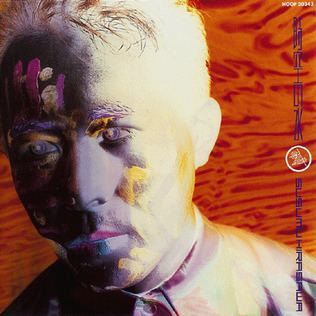Recorded April – May 1989 | Length 43:16 Release date 1 September 1989 | |
 | ||
Released September 1, 1989 (1989-09-01) Studio VariousKeystone Studio (Recording & Mixing), Sendagaya, Shibuya, TokyoKeystone Izu Studio, Yawatano, Itō, ShizuokaSound Inn, Yonban, Chiyoda, TokyoGold Rush Studio (Mixing), Kojima, Taitō, Tokyo Genres Progressive rock, Synth-pop, World music, New-age music, Sound collage Similar Susumu Hirasawa albums, Synth-pop albums | ||
Water in Time and Space (時空の水, Jikū no Mizu) is Susumu Hirasawa's first solo album.
Contents
Background
In December 1988, Hirasawa decided to put his post-punk/new wave band P-Model on hiatus after spending two years being unable to arrange a recording deal, feeling that the group's continued existence was taking a mental and emotional toll on him. The following year, he was signed to Polydor, where he recorded Water in Time and Space.
Composition
Water in Time and Space is half a self-cover album: With the band being put on hold, P-Model's Monster album was not recorded. However, Hirasawa could not afford to discard three of its songs and salvaged them for the album instead. Two songs from lo-fi cassette only releases (Scuba and Charity Original Tape) were also rearranged for the album, with Hirasawa wanting a better form for the former and the latter being a guideline for the style of Water in Time and Space. To prepare for the songwriting of new material, Hirasawa re-recorded "Happening by the Windowsill" by his former progressive rock band Mandrake as an étude.
Water in Time and Space features a large variety of styles, such as march, orchestral, western and folk, influenced by Jungian, New Age and Andean themes. The album has no particular total concept, unlike most of Hirasawa's solo output. Free from the constraints of P-Model and the band's nervous energy, the album is comparatively light and brisk. Though created with heavy use of digital devices, it is one of Hirasawa's least electronic works, with prominent use of acoustic tones throughout. In the manner of P-Model's 1986 album One Pattern, Hirasawa also put emphasis on sampling, with such sounds as bird chirping and coin rolling being used as rhythmic backing.
Production
Water in Time and Space is built around the Korg M1 workstation synthesizer, whose expansive, organic-sounding palette completely replaces the digital tones from the Casio synths used by the P-Model in their later years. The M1's built-in sequencer and its large memory bank led to a shift in Hirasawa's production style; with the M1, he could record parts of songs that weren't completed in studio at home, being more equipped to make music by himself and less dependent on labels. Still, some equipment from One Pattern and Monster was carried over, as well as the mechanical lo-fi sound of the former album, setting up the general production style of Hirasawa's first solo phase.
The chief engineer of the album is Yoshiaki Kondo, who worked on Karkador and One Pattern, this being the first project where Hirasawa got his long-sought services unaltered. Besides electronics, Hirasawa also performed with plucked string instruments and percussion instruments. Only two tracks were performed by Hirasawa completely solo, while others feature a variety of guest performers, such as session musicians for parts he couldn't play by himself and friends from the underground new wave scene. For songs that required choral backing, Hirasawa would get whoever was present during recording and form an impromptu choir.
Track listing
All tracks written by Susumu Hirasawa, except "Root of Spirit", with titling by Toshiaki Minejima and string arrangement by Jun Miyake.
Personnel
Release history
Songs
Soul Home5:43
Solar Ray3:08
Dune4:37
